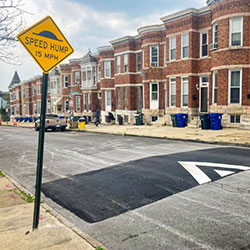Traffic calming measures are essential tools in enhancing safety and efficiency on roads. These measures aim to reduce vehicle speeds, improve pedestrian safety, and create a more pleasant environment for all road users. Among the various traffic calming methods, the use of speed bumps and humps plays a significant role in achieving these objectives.
Types of Traffic Calming Measures
Various traffic calming methods are employed to create safer and smoother road conditions. Some common techniques include:- Road narrowing: Restricting the width of the road to slow down vehicle speeds and promote safer driving.
- Chicanes: Introducing a series of alternating curves on the road to reduce straight-line speeding.
- Speed cushions: Raised platforms on the road that allow larger vehicles to pass while encouraging cars to slow down.
The Effectiveness of Speed Bumps and Humps
Speed bumps and humps have proven to be highly effective in reducing vehicle speed and enhancing road safety. Data and statistics indicate a significant decrease in speeding incidents in areas where these traffic calming measures are implemented. Studies have shown that the presence of speed bumps and humps can lead to a noticeable reduction in accidents and injuries caused by excessive speed. Furthermore, numerous case studies and anecdotes highlight the successful implementation of speed bumps and humps in various locations. Communities have reported a positive impact on traffic flow and pedestrian safety after the installation of these physical road features. Drivers tend to approach these areas with more caution, leading to a decrease in the likelihood of accidents.Installation and Design Considerations
Proper installation of speed bumps and humps is crucial to ensure their effectiveness in traffic calming. When implementing these measures, it is essential to follow specific guidelines to achieve the desired results. Factors such as material, spacing, and visibility play a significant role in the design process.- Material: Selecting the right material for speed bumps and humps is important for durability and effectiveness. Materials like rubber, asphalt, or concrete are commonly used based on the traffic volume and speed in the area.
- Spacing: The spacing between speed bumps or humps should be carefully planned to maintain traffic flow while reducing speed. Proper spacing helps in preventing driver frustration and excessive braking.
- Visibility: Ensuring the visibility of speed bumps and humps is essential for alerting drivers in advance. Reflective markings, signage, and adequate lighting can enhance visibility and reduce the risk of collisions.

